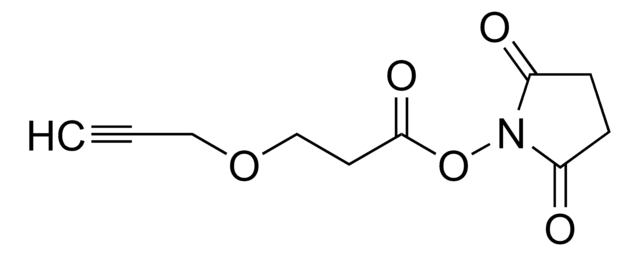910007
20-Azido-3,6,9,12,15,18-hexaoxaicosanoic acid
95%
Sinónimos:
Azido-PEG6-CH2CO2H, Azido-PEG6-acid, N3-PEG6-CH2COOH
About This Item
Productos recomendados
Análisis
95%
formulario
(Liquid or Semi-Solid or Paste or Solid)
idoneidad de la reacción
reaction type: click chemistry
reagent type: cross-linking reagent
grupo funcional
azide
carboxylic acid
temp. de almacenamiento
2-8°C
cadena SMILES
OC(COCCOCCOCCOCCOCCOCCN=[N+]=[N-])=O
Aplicación
Información legal
Producto relacionado
Código de clase de almacenamiento
10 - Combustible liquids
Clase de riesgo para el agua (WGK)
WGK 3
Punto de inflamabilidad (°F)
Not applicable
Punto de inflamabilidad (°C)
Not applicable
Certificados de análisis (COA)
Busque Certificados de análisis (COA) introduciendo el número de lote del producto. Los números de lote se encuentran en la etiqueta del producto después de las palabras «Lot» o «Batch»
¿Ya tiene este producto?
Encuentre la documentación para los productos que ha comprado recientemente en la Biblioteca de documentos.
Nuestro equipo de científicos tiene experiencia en todas las áreas de investigación: Ciencias de la vida, Ciencia de los materiales, Síntesis química, Cromatografía, Analítica y muchas otras.
Póngase en contacto con el Servicio técnico








